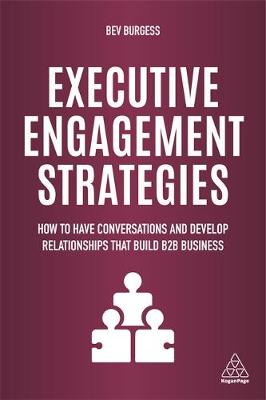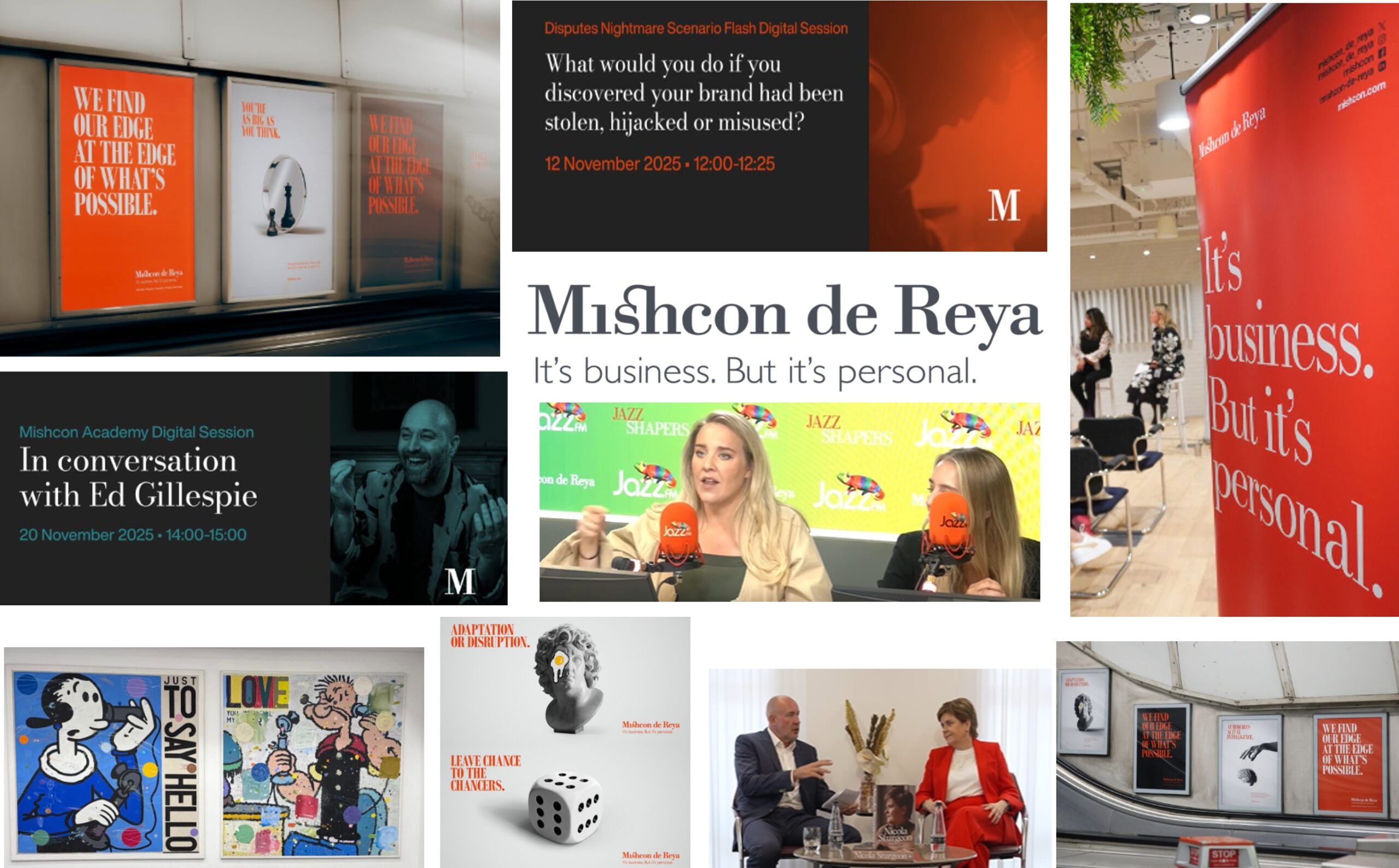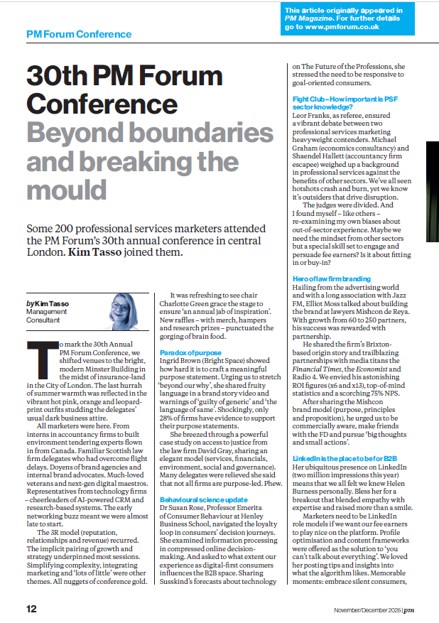
(A shorter version of this book review: Executive Engagement Strategies appeared in a recent edition of Professional Marketing magazine)
I reviewed two of Bev’s previous books – in 2011 on marketing technology as service and more recently, in February 2020, her fabulous practitioner’s guide to Account Based Marketing. I’m a big fan. This one focuses on engaging with senior (C-suite) executives.
I wasn’t quite sure on the role and readership for this book though. In some respects it is a natural follow-on from the ABM book – providing insight into marketing strategies to implement the ABM outlined there. It’s strong on marketing communication but not exactly a sales guide (it avoids the word selling) although it occasionally addresses advanced level selling skills.
The first sentence (“The world is increasingly moving online”) resonates under the lockdown regime. There’s early recognition that “people buy from people” and a constant reminder of the importance of face-to-face meetings.
Early on, the author summarises the process of understanding senior buyers, the buying process and how to use personalised content using both online and offline communication channels. One of the most important insights I thought was “Move from a ‘publishing’ mind set to one that ‘enables’ conversations with the executives you are targeting”. There’s an early overview of the steps in designing and organizing an executive engagement strategy which are later explored in more detail.
There are examples of connecting with customers on an emotional level though with a variety of online content exchange (with an emphasis on personalisation) through live events and peer sharing, down to small group activities or individual meetings. The importance of peer-to-peer networking means that professional service firms have little choice but to involve fee-earners whereas in tech companies, which are sales-dominated organisations, they have dedicated sales and account managers for these roles.
Not surprisingly, the material is based on and designed for technology companies that have the fantastic systems, big data and salesforces which are so often lacking in professional services firms. Quantifying the business case is much easier within technology solutions than professional services.
Case studies are mostly from tech companies – although there are endorsements from BDO International and Cushman & Wakefield, a foreword from Jon Geldart, (formerly at PwC and Grant Thornton and now director general of the Institute of Directors). He also talks about engaging with executives in China. There is a case study of EY’s “Insights for Executives” series, Deloitte’s four criteria to evaluate thought leadership quality, PwC’s interview programme of CEOs and online dating applied at Accenture. There’s also an interesting case study of specialist architects GLMV.
On the upside, this book has a lot to offer. I particularly liked:
- It’s evidence-based – mostly from ITSMA (IT Services Marketing Association) research
- The focus on the DMU and the changing nature of the (procurement driven) purchasing process
- Analysis of input-focused and output-focused contracts
- Diagram and tables showing the popular elements of an executive engagement programme
- Pragmatic guidance on developing buyer personas (including behaviours such as solution triggers, success factors, evaluation process and decision criteria and psychological profiling) and good information on the process behind creating case study stories
- Similarly pragmatic advice on developing research briefs and running research projects
- Research supporting the challenger/insight selling approach and data on the content that buyers value
- Case studies – especially those that use thought leadership. For example: IBM aligning digital and human touchpoints through the customer experience, to pipeline conversion to opportunity generation using free access to subject matter experts (SME) and also face-to-face enablement with a dashboard to understand, ideate, prioritise and build for team-based client conversation planning. And the SAP “Moments that matter” client experience management initiative with welcome/on-boarding, go-live, show value, emergencies, renewals, anniversary and advocate programmes and then four pillar communications strategy of: always in touch, always engaged, always connecting and always inspiriting.
- An elegant summary diagram of the B2B buying process
- Tables showing how to move from activity to outcome-based metrics and KPI dashboards
There was some discussion of value propositions – although you might do well to look at Malcolm McDonald’s 2019 book. The Trusted Advisor work of Galford, Green & Maister is referenced “The trusted adviser is a more subtle idea than the “challenger sales” person, defined by CEB (2011) as “the ability to do three things: teach, tailor and take control”.
Several activities were mentioned repeatedly: executive briefings, advisory councils, advocacy programmes (referrer management), innovation/insight workshops, thought leadership, social media, alumni programmes, ABM, peer-to-peer events, Apps, seminars, webinars, social media, newsletters, industry associations, events, online ‘jams’, briefing centres,
The author states “The most compelling kinds of events or meetings are business seminars presented by your SMEs or by industry analysts, innovation workshops or in-person executive briefings – while at the very bottom are online or virtual events, which many suppliers offer but which few executive rate as helpful” – which puts us in a difficult position during lockdown but suggests that the current explosion in virtual events may not be sustained. However, other data in the book shows that it is the over 40 year olds who prefer face-to-face and Millennials rely on social media networks.
I get frustrated with the constant focus – in this book and others – on the 3Rs of reputation, relationships and revenue – which overlooks the vital importance of both client needs and profit. The 3Rs feels the opposite of client-centric to me.
I was disappointed that despite relationship building being a core part of the title, there was only one short chapter (engaging individuals) on this aspect. And it did feel a little like the marketing function was relegated to research and communications activities at times.
That the book is so broad and wide-ranging is both a strength and a weakness. Good as everything is covered, but often leaving you a bit overwhelmed and wanting a deeper dive into some topics. Overall though, this is an excellent book – jam-packed with real food for thought, inspiration as to how the leading technology companies in the world tackle engagement and lots of pragmatic advice.
Key statistics
(Care should be taken in professional services as most of these relate to technology companies):
- 77% decided to purchase new opportunities from incumbent solution provider (noting risk avoidance)
- Since nine times out of 10, buyers develop a shortlist of just three companies, with existing suppliers usually on it. Research from 2018 into how executives engage showed that existing suppliers win the deal 55% of the time.
- Contracts over $500,000, the ranked top three deciding factors:
- Price of the solution
- Knowledge/understanding of our industry
- Knowledge/understanding of our unique business issues
- Experience with the technology/solution
- Quantifiable value of the proposed solution
- Trustworthiness
- Fresh ideas and innovation
- Collaboration
- Strength of brand/reputation
- Flexibility in approach
- Research shows that the most sophisticated thought leadership programmes gather ideas from a wider range of sources and that 75% of them co-create thought leadership with their clients
- Buyers spend nearly as much time offline (47% to 51% during the buying cycle phases) as online
- Research in 2019 into how executives engage has revealed that most rely on just two to four suppliers to be their trusted advisers, with the most common number being three
- When it comes to valuing relationship-building activities run by suppliers, private customer events are top of the list, followed by private executive-level briefings and executive-level business events and one-on-one executive-to-executive relationships
Contents
Definition: “Executive engagement is about building relationships with senior buyers in the organizations with which you want to do business, and with other senior executives whom those buyers trust. It is a long-term business development strategy aimed at creating mutual value for everyone involved”.
- Business buyers don’t behave like consumers
- What is executive engagement?
- Understanding executives
- Who should engage?
- Having something to say
- Knowing when to engage
- Engaging with peer networks
- Engaging small groups
- Engaging individuals
- Measuring success









